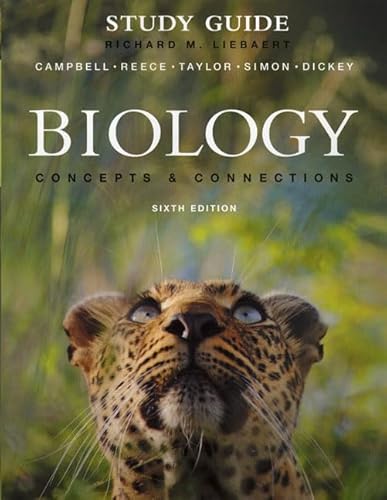
Campbell Study Guide Questions
. Marty Taylor (Cornell University). Provides a concept map of each chapter, chapter summaries, a variety of interactive questions, and chapter tests.
cell structure & function2017-10-12
chapter 272013-02-19
exam 2 - for final2014-05-04
unit i2015-01-31
exam 4 - for final2014-05-06
ap bio chapter 532013-02-25
chapter 102013-02-18
chapter 62013-02-18
chapter 152013-02-18
chapter 42: circulation and gas exchange2013-02-25
chapter 28: protists2013-02-26
unit ii2015-03-17
chapter 192013-02-19
genetics2017-11-13
evolution2017-11-13
chapter 7 flash cards2013-02-19
science & energy flow & diversity2017-08-17
plant tissue (form & function)2017-10-13
unit iv2015-04-27
chapter 14: mendel and the gene idea2013-02-19
molecules of life 22017-11-13
final exam2013-04-30
animal development2013-04-25
cell division2017-11-12
unifying themes of biology2017-10-07
chapter 332013-02-26
chapter 23: the evolution of populations2013-02-18
final exam unit 12013-04-24
chapter 37: soil and plant nutrition2013-02-21
chapter 45: set 2 2013-02-19
chapter 112013-02-18
chapter 21: genomes and their evolution2013-02-20
chapter 522013-02-26
bacteria2017-10-10
phylum cnidaria2012-05-23
deutch2017-11-21
molecules of life2017-11-12
phylum porifera2012-05-23
animal nutrition2017-11-13
chapter 482013-02-27
invertebrates2011-07-12
metabolism2017-11-13
animal tissues2017-10-11
viruses2017-10-10
chapter 32013-02-16
biology lab final exam2015-04-21
chapter 462013-02-25
chapter 292013-02-24
ap biology - croson 2012-13 study guide (2012-13 croson)2013-06-30
final exam unit 12013-04-24
chapter 342013-02-25
chapter 412013-02-20
chapter 40: basic principles of animal form and function2013-03-04
ch. 22-descent with modification: darwinian view of life2013-02-19
38 kita2013-02-26
ap biology chpt 262013-02-20
slide set xiii2011-08-03
chapter 482013-02-24
animal diversity2011-07-11
comparative animal development2011-07-11
- 1
What could be the cause of the grief experienced by the character in the poem 'Angle’’?
The grief may be caused in this context by the passing of the narrator. Korean keyboard download for mac windows 10. The narrator calls the unnamed person to him but he puts some conditions in place. The first stanza uses other images such as wings and the image of clouds to transmit the idea that maybe the narrator has passed away and he is mourned by those he left behind. Thus, the grief may be caused in this instance by the narrator’s passing.
- 2
Who is Baptiste, the man with whom the narrator talks with in the poem 'At the cedars’’? Addmefast tidak bisa dibuka.
In the poem mentioned above, the narrator describes a tragic event, an accident during which he and the rest of the men he worked with were thrown into water. A man who was on the side tried to help them but he got injured in the process and became incapacitated. Two girls saw what was happening and they tried to save the men in the water but unfortunately they died when they boat sunk. The end of the poem reveals how maybe the two girls were Baptiste’s daughters. The poem ends with the narrator claiming that Baptiste had two daughters but they were called by God, hinting thus that they died. The poem could be a way for the narrator to transmit the tragedy that happened.
- 3
What is a wigwam and what could it symbolize?
A wigwam is the name given to a traditional Native American building, used for housing. The small home was made out of wood, mud and hay and thus it was something simple that could be built in a short period of time. The name appears in the poem ‘’The half-breed girl’’ where the narrator mentions how the girl moved from her home in the city into a wigwam. This may symbolize the fact that the girl returned to her natural state, abandoning the city and trying to live a life closer to nature. Thus, the building is used to symbolize a return to nature.